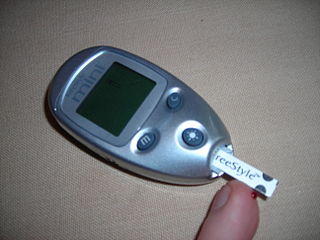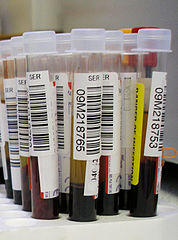Tests For Measuring Blood Glucose Levels
Glucose is the simple carbohydrate that is used for energy production. It can be consumed directly or more complex carbohydrates can be broken down into glucose. While other nutrients play different roles in the body, both fats and proteins can also be converted into simple carbohydrates if it is needed for energy.
Glucose is transported through the bloodstream to every cell. This ensures that the cells have a constant supply for energy production. Without glucose and energy production, cells will not function properly and eventually die. Fortunately, the human body has several reserves to maintain a constant supply of glucose to the cells.
In this way, the blood glucose/sugar levels are normally maintained within a narrow range. However, any rise or drop in the glucose levels above or below the normal range can have serious effects.
Monitoring your blood glucose levels are not usually necessary unless you have related problems. The most common is diabetes mellitus where a deficiency of insulin or impaired response to it allows for the blood glucose levels to go too high (hyperglycemia). Elevated blood glucose levels can damage cells throughout the body.
Diabetics are also at a risk of developing very low blood glucose levels (hypoglycemia) if their condition is not properly maintained. Hypoglycemia in the absence of diabetes is not as common but it can occur frequently in some people. Usually the drop in glucose levels are not drastic enough to threaten the person’s life but it can cause fatigue, difficulty concentrating, blurred vision, dizziness and even lead to blackouts.
Blood Glucose Testing

Testing the blood glucose levels are done for two reasons – either to diagnose a problem with glucose control or to monitor the treatment of hyper- and hypoglycemia. It can also be used as a means to detect and prevent serious conditions caused by extreme changes in the blood glucose levels.
Blood glucose testing can be done on home monitors but more definitive and accurate results may require laboratory testing. Nevertheless it is a convenient tool for diabetics to monitor changes in blood sugar levels and take the appropriate measures immediately.
Be it home monitoring or laboratory testing, the need for a blood sample makes conventional blood glucose testing an invasive procedure. Glucose is not only detectable in the blood – it can also be detected in the urine. However, urine glucose testing is not a reliable means of recording the exact levels or monitoring related conditions that may cause hyperglycemia.
More recently, sensors have been developed to detect glucose in saliva and even tears. It may have similar limitations to urine glucose testing but does offer exciting possibilities in constant glucose monitoring through non-invasive means. Skin glucose testing was tried in the past but did not offer the level of reliability as other methods.
Timing of Tests
It is not solely the type of testing that matters but also the timing. These are important considerations since the blood glucose levels fluctuate throughout the day. It is usually lower after waking from sleep and before a meal. Conversely, blood glucose levels tend to rise after eating and with any stress. The highest levels after eating (post-prandial) are usually recorded within 90 minutes to 2 hours after a meal. For diagnostic purposes, the fasting levels are therefore recorded.
Diabetics using home monitors should record their blood glucose levels before eating a meal and even 2 hours after a meal in order to compile a daily glucose profile. This can assist the doctor in making any changes to the drug regimen in the management of diabetes. It can also help both the patient and doctor in identifying individual foods that may be a problem by causing spikes in glucose levels. Furthermore it may help insulin-dependent diabetics in making any changes to the insulin administration program should there be dangerous spikes to glucose levels.

Fasting Glucose Test
A fasting blood glucose test is usually done in the morning. It works on the premise that a person would not have eaten for at least 8 hours. However, if circumstances do not permit for morning testing then a person should abstain from eating for 8 hours and have the test anytime thereafter. Fasting blood glucose is a useful screening method. If a person is suspected of being a diabetic then further testing, like an oral glucose tolerance test (OGTT) or A1C test, should be done.
Normal levels may indicate that a person does not have any problems with glucose control. Moderately elevated levels may be indicative of prediabetes (impaired glucose tolerance) and high levels may be a sign of diabetes. Normal fast glucose levels range from 70 mg/dL to 99mg/dL (3.9 mmol/L to 5.5 mmol/L)
Random Glucose Test

Random glucose testing is done at any time in the day. The results may vary greatly as it depends on when the last meal was consumed. However, it works on the fact that a healthy person with normal glucose tolerance will not have major changes in blood glucose levels. Essentially these levels will sit in the narrow range – towards the lower end if a person has not eaten for a long time or towards the higher limit shortly after a meal. It does not cross the upper limit of the normal range in a healthy person. The problem with random glucose testing is that higher levels indicative of prediabetes or diabetes may be missed.
Normal random glucose levels range from 70 mg/dL (3.9 mmol/L) and do not exceed 140 mg/dL (7.8 mmol/L)
Oral Glucose Tolerance Test
The oral glucose tolerance test involves a controlled testing procedure where the blood sugar levels are measured before and after consuming a set quantity of glucose solution. It is often said to be the gold standard for diagnosing diabetes mellitus. This simply means that it is the most accurate test currently available to definitively confirm or exclude prediabetes or diabetes. First, a blood sample is drawn (fasting glucose) and then the patient is required to drink a 75 gram glucose solution. Another blood sample is taken 2 hours later. Pregnant women may be required to consume 100g of glucose and 1-hour and 3-hour readings are also taken apart from the fasting and 2-hour reading.
Normal oral glucose tolerance levels for the different time periods can be found here.
A1C Blood Test

The A1c test indicates glucose control over a 3 month period. It is able to do this by measuring the amount of glycated hemoglobin in the bloodstream. Glycated hemoglobin is found in red blood cells so the A1c blood test essentially measures the glucose accumulation in these cells. Therefore the test is also known as the glycated hemoglobin or glycohemoglobin A1c (HbA1c) test. It is considered as the best indicator of how the glucose levels fared over a prolonged period and can be helpful in assessing if a diabetic has adhered to dietary, lifestyle and medication recommendations. It is therefore used as a monitoring test for diabetics. However, it is unable to indicate sudden changes in the blood glucose levels within the course of a short period of time.
Normal A1c levels should be less than 5.7%. Diabetics should aim for an A1c level of 7% or less.
References:
www.webmd.com/diabetes/guide/normal-blood-sugar-levels-chart-adults


